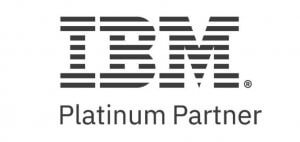Comparing One Piece at a Time Solutions to an Integrated Solution for Systems Engineering
 Companies often face a critical decision: should they assemble a best-of-breed (BoB) solution one piece at a time by integrating multiple specialized tools, or should they opt for an integrated tool foundation? Each approach has its merits and challenges, and this post aims to provide a comparison, using IBM Engineering as a representative example of an integrated foundation.
Companies often face a critical decision: should they assemble a best-of-breed (BoB) solution one piece at a time by integrating multiple specialized tools, or should they opt for an integrated tool foundation? Each approach has its merits and challenges, and this post aims to provide a comparison, using IBM Engineering as a representative example of an integrated foundation.
Best-of-Breed Solutions: Flexibility at a Cost
Strengths:
Specialization: Best-of-breed solutions allow organizations to select tools that excel in specific areas of systems engineering. For instance, a company might choose one tool for requirements management, another for testing, and yet another for project management. Each tool is likely to be the best in its class, offering advanced features tailored to specific tasks.
Flexibility and Customization: Organizations can mix and match tools based on their unique needs. This approach allows for high customization, enabling teams to create a solution that fits their workflows perfectly. Additionally, it allows organizations to adopt new tools as they emerge, staying at the cutting edge of technology.
Innovation and Competition: The BoB approach fosters innovation, as different vendors compete to offer the best solutions in their niche. This competition can lead to rapid advancements in tool capabilities.
Challenges:
Integration Complexity: One of the most significant challenges with BoB solutions is the integration effort required. Different tools may use different data formats, user interfaces, and APIs, leading to integration issues that can consume valuable resources. Ensuring seamless data flow between tools often requires custom development, middleware, or third-party integration platforms.
Data Silos: Without proper integration, data can become siloed, hindering collaboration and visibility across the engineering lifecycle. This can lead to inconsistencies, errors, and delays, as team members may not have access to the most up-to-date information.
Total Cost of Ownership (TCO): While BoB solutions can offer initial cost savings, the TCO may increase over time due to integration, maintenance, and support costs. Managing multiple vendor relationships and support contracts can also add complexity and cost.
Reuse of components: Best-of-breed solutions typically lack the ability to manage reuse at the component level across multiple tools. While specialized tools might offer strong reuse capabilities within their own domains, they often do not integrate as well with other tools, making it difficult to reuse components across different parts of the engineering lifecycle. This can lead to fragmented reuse efforts, where components are duplicated or manually adapted for each project, increasing the risk of errors and inconsistencies.
Integrated Solutions: Cohesion and Efficiency
Strengths:
Seamless Integration: Integrated solutions, such as IBM Engineering, offer a cohesive environment where all tools are designed to work together out of the box. This seamless integration reduces the risk of data silos and ensures that information flows smoothly across the entire systems engineering lifecycle.
Unified Data and Processes: With an integrated solution, all data is stored in a common repository, providing a single source of truth. This unified approach enhances collaboration, as team members can access and share information more easily. It also simplifies reporting and analytics, as data is already consolidated.
Reduced Complexity and Lower TCO: Integrated solutions reduce the complexity of managing multiple tools and vendors. With a single point of contact for support and a unified platform for maintenance, organizations can lower their TCO. Additionally, integrated solutions often include built-in best practices and workflows, reducing the need for customization.
Consistency and Standardization: An integrated solution promotes consistency in data formats, processes, and user interfaces. This standardization can lead to increased efficiency and reduced training requirements, as team members need to learn only one system.
Traceability: Traceability is significantly enhanced with an integrated solution because all data and artifacts are stored within a unified environment. In an integrated system, requirements, designs, test cases, and other elements are seamlessly linked, allowing teams to easily trace relationships and dependencies across the entire engineering lifecycle. This end-to-end visibility ensures that changes in one area are automatically reflected throughout the system, reducing the risk of inconsistencies and errors. Additionally, having a single source of truth simplifies audits and compliance reporting, as all relevant data is readily accessible and traceable without needing to manually reconcile information across disparate tools. The result is a more cohesive, efficient, and reliable traceability process that supports better decision-making and project outcomes.
Component reuse: An integrated solution like IBM Engineering’ offers Global Configuration Management (GCM) capability which offers a significant advantage in reuse by enabling organizations to manage and reuse components across different projects and product lines seamlessly.
Challenges:
Lack of Specialization: Integrated solutions may not offer the same level of specialization as best-of-breed tools. While they provide a comprehensive set of features, some organizations may find that certain functionalities do not meet their specific needs as well as a dedicated tool might.
Initial Investment: Integrated solutions may require a higher upfront investment compared to assembling a BoB solution. However, this cost may be offset by the long-term savings in maintenance, support, and integration efforts.
IBM Engineering as an Integrated Solution
IBM Engineering offers a comprehensive suite of tools designed to support the systems engineering lifecycle. This integrated solution includes capabilities for requirements management, systems design, testing, and project management, all within a unified platform.
Seamless Data Flow: IBM Engineering ensures that data flows seamlessly between its tools, providing a single source of truth for the entire engineering team. This integration helps reduce errors and improves collaboration.
Scalability and Flexibility: While it is an integrated solution, IBM Engineering is also highly scalable and can be tailored to meet the needs of different organizations, from small teams to large enterprises.
Proven Industry Standard: IBM Engineering is widely used in industries such as aerospace, automotive, and defense, where rigorous standards and complex systems are the norms. Its comprehensive feature set and integration capabilities make it a robust choice for organizations seeking an integrated solution.
Traceability: IBM Engineering enhances traceability by integrating all data and processes within a unified platform, ensuring seamless connections between engineering elements and reducing errors. This comprehensive integration simplifies audits and supports more reliable project outcomes through complete visibility and consistent information flow.
Component reuse: IBM Engineering Global Configuration Management allows for the creation of configurations that span multiple engineering disciplines, making it easy to track, manage, and reuse components at a granular level. This capability ensures that teams can reuse not just individual assets, but entire configurations of assets, maintaining consistency and traceability across projects.
Summary
The choice between best-of-breed solutions and an integrated foundation depends on an organization’s specific needs, resources, and long-term goals. Best-of-breed solutions offer flexibility and specialization but come with the challenges of integration and potential data silos. On the other hand, integrated solutions like IBM Engineering provide a cohesive, unified platform that reduces complexity and enhances collaboration and it’s OSLC capability allows integration with existing tools.
For organizations prioritizing efficiency, collaboration, and reduced complexity, an integrated solution like IBM Engineering may offer significant advantages. 321 Gang can help you assess which approach might be right for your organization.
By Tom Hollowell


321 Gang | 14362 North FLW | Suite 1000 | Scottsdale, AZ 85260 | 877.820.0888 info@321gang.com
The Future is Now
We have helped our clients:
- Reduce development costs by 50-60%
- Accelerate time to market by 20-40%
